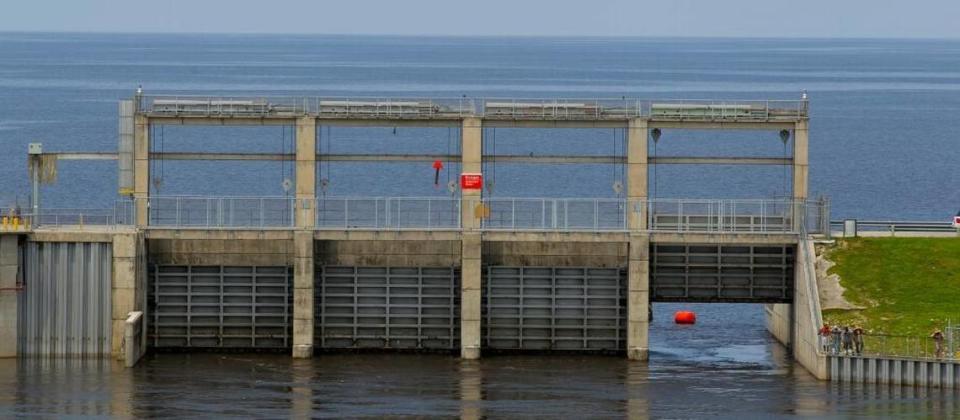‘Everything below the lake is full’: Corps mulls Lake O releases ahead of storms
The U.S. Army Corps of Engineers said that it may need to move water out of Lake Okeechobee to the St. Lucie estuary to make room for possible rainfall from storms in the Atlantic.
“We are looking at the need to make releases relatively soon,” said Col. Andrew Kelly, Jacksonville District Commander, during a briefing on the status of water management activities in South Florida. “Everything below the lake is full. There isn’t a whole lot of room to move water south of the lake.”

Tropical Storm Wilfred formed in the Atlantic Friday morning, while Hurricane Teddy, a powerful Category 4 storm, is continuing to move toward Bermuda. Also on hurricane forecasters’ radar: Post-tropical cyclone Paulette is moving in the far away Atlantic, a small low pressure system is nearing Portugal and a new tropical wave is forecast to move off the west coast of Africa by early Saturday.
Kelly said that the South Florida Water Management District has been doing some water maneuvering in canals and other flood control structures over the past two weeks to find space to hold some capacity, and that there isn’t any room left.
Releases of nutrient-rich discharges from Lake O have led to harmful algae blooms and fish kills in the St. Lucie and Caloosahatchee estuaries over the past few years.
Lake Okeechobee was at 15.1 feet on Friday, not levels that pose any immediate flood risk to surrounding areas. But the Corps was “in fast decision-making mode” as water managers strategize on how to create capacity in the lake in case current storms drench the region, similar to what happened during Hurricane Irma in 2017, Kelly said.
The Corps hasn’t made releases from Lake O since March 2019, when it allowed for water to flow east down the St. Lucie river.
“It’s not necessarily about the first storm; it’s about the second storm, and the next set of storms,” Kelly said. “If you get a situation like Irma, which put three feet of water in the lake and then you get something right behind it, that’s when you start to have concerns.”

